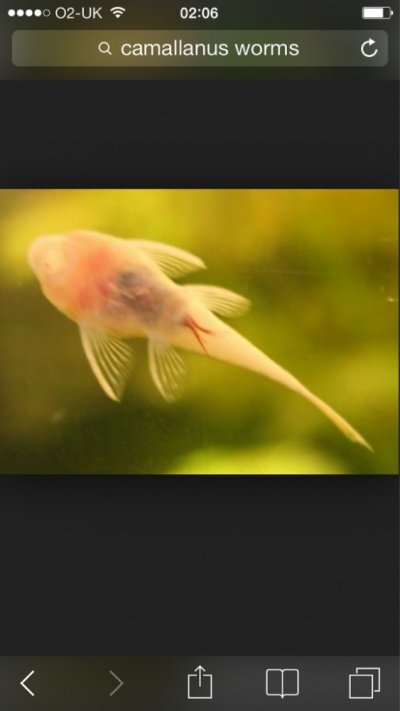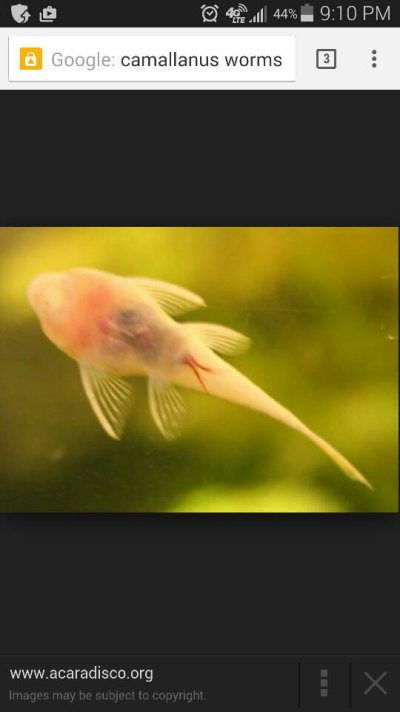Linwood
Aquarium Advice FINatic
We have a very healthy and happy appearing albino BN pleco, who is in a community tank with other plecos, all of whom are happy and some (not sure exactly who) is breeding and having babies.
This (only) albino has something very regular and red in his vent.
This doesn't look like parasites -- at least if they are, they are very regular (all the same length), they move together and stay pretty well aligned. In this photo they are a bit irregular looking but most of the time they stay aligned.

I have been unable to see under any of the others - they have chosen not to get on the glass in the last day, at least when I was looking. And they are pretty hard to catch due to lots of plants.
Is this just some kind of blood-filled normal part of the body showing in stark contrast to the body?
Or do I have some kind of parasite?
This (only) albino has something very regular and red in his vent.
This doesn't look like parasites -- at least if they are, they are very regular (all the same length), they move together and stay pretty well aligned. In this photo they are a bit irregular looking but most of the time they stay aligned.

I have been unable to see under any of the others - they have chosen not to get on the glass in the last day, at least when I was looking. And they are pretty hard to catch due to lots of plants.
Is this just some kind of blood-filled normal part of the body showing in stark contrast to the body?
Or do I have some kind of parasite?



